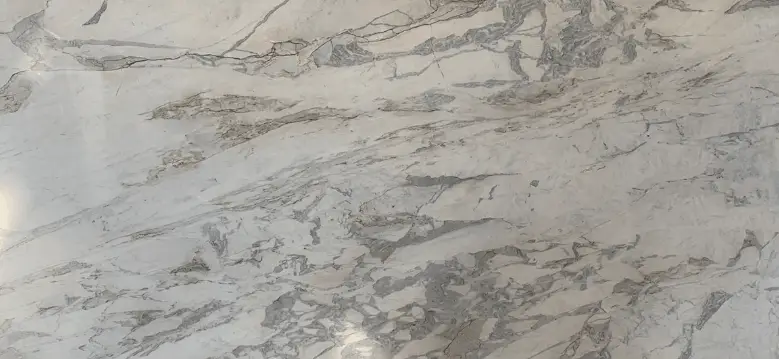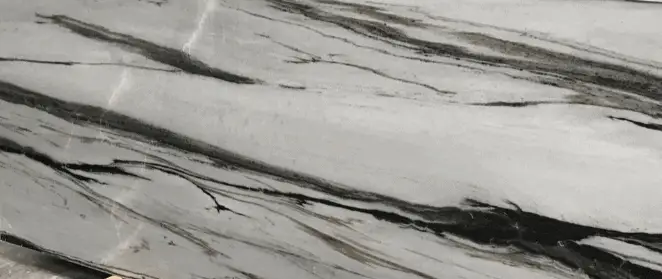Natural stone countertops are becoming increasingly widespread with trends and new aesthetic ideas, with marble and granite undoubtedly being some of the most favored options. But, these can be expensive or troublesome to maintain, and dolomite offers similar visual appeal with some added longevity benefits. But is it a good choice for countertops?
Dolomite countertops offer heat resistance, pressure resistance, durability, and visual appeal for affordable prices and reasonably low maintenance. However, dolomite is still vulnerable to scratches, cracks, and stains, requiring careful handling and periodical sealing.
If you’re seeking a stunning countertop material that complements your interior décor for reasonably affordable prices, dolomite may be a perfect material option for you.
But, while many individuals choose dolomite for their countertops, there are few factors to consider. Join us as we discuss dolomite as an option for countertops and what pros and cons should be considered.
Dolomite, otherwise known as dolostone, comprises mineral dolomite formed through the post-depositional alteration of limestone and mud within magnesium-rich groundwater. The use of dolomite for countertops is becoming more widespread as people become aware of its visual aesthetic paired with great usability.
The material is described as being similar to marble with a slightly different look and beneficial physical qualities. Selecting dolomite offers plenty of benefits compared to many of the other popular countertop material options. These pros make dolomite a versatile countertop choice favored by many individuals.

Dolomite is heat resistant and holds heat very well compared to many other materials, which is vital for countertops that will support warm objects, such as when cooking. Of course, it’s never advised to put hot pots and pans directly onto any countertop, irrespective of the material used.
But, using a material that offers a decent level of heat resistance is definitely a major advantage when working with countertops. The heat-resistant nature of dolomite often makes them preferred over quartz and perfect for kitchen use in particular.
While owners will still need to handle with care, the risks of dolomite countertops cracking under the pressure of your pots and pans are far less compared to many other materials. Dolomite is pressure-resistant, which is crucial for countertops intended to support numerous weights.
Dolomite is a harder-than-average material and is not as fragile as marble. On the Mohs hardness scale, dolomite rates at 3.5 – 4, superior to marble’s Mohs rating. A higher hardness rating makes it a durable and strong countertop over time, capable of supporting various uses while being resistant to wear and tear.
One of the most favored aspects of dolomite is the fact that it offers a similar look when compared to marble, as dolomite often features streaks of varying colors and hues. In conjunction with many other preferential physical attributes, the visual appeal makes it a great countertop choice.
There is plenty of versatility concerning the visual appeal. Most dolomite variants offer tones ranging from gray and white, with popular monotone types including Super White Dolomite, Avalanche, Donatello, and Milano Venato Dolomite. This stone flaunts a sleek, smooth, and glossy aesthetic when prepared.
Various interesting swirls and streaks adorn dolomite countertops, with many options suited to any interior design scheme. The cleavage formed within dolomite is described as perfect, rhombohedral, or three-directional, topped with a fascinating and attractive hexagonal crystal system.
Every stone slab is unique concerning its fossilized mineral patterns, but all variants of dolomite boast a transparent to translucent, pearly luster. If you're searching for a splash of color, dolomite countertops can occasionally be found in variants of pink, black, green, and brown, making dolomite a suitable material choice for numerous interior color schemes.

The lower cost involved is undoubtedly one of the most persuasive motives for choosing dolomite countertops, as they are typically far cheaper than marble, granite, or quartz. Dolomite costs may still vary, depending on the stone supplier, but the costs generally range between the costs of quartzite and marble.
Unlike many other materials which may be challenging to locate and acquire, dolomite is rich in abundance as it forms worldwide. A higher supply of raw material makes it easily accessible for countless individuals within varying regions.
Dolomite still requires plenty of tender love and care to keep it looking great and functioning well. But, dolomite countertops are undoubtedly easier to take care of compared to marble countertops. They do need to be sealed periodically, which should be factored into maintenance costs over time.
Although dolomite appears to be a perfect choice for countertops, there are a few cons to consider when investing in this material for your purposes. However, many of these cons can be alleviated with proper maintenance and care over time.
While they are harder than many other materials such as marble or calcites, they are still softer than granite and can be prone to scratches and etchings. Granite boasts a higher rating on the Mohs hardness scale, superior to dolomite concerning durability. Similarly, quartz is also superior to dolomite concerning durability since it rates 7 on the Mohs hardness scale.
Dolomite is particularly vulnerable to scratches from metal and glass, necessitating careful handling of utensils, dishes, silverware, and accessories. Usually, scratch tests can be done on sealed samples of dolomite, giving insight concerning its vulnerability to scratches, etchings, and cracks.
Even though they are relatively durable, dolomite countertops can still stain over time. No matter how dense, natural stone is porous to varying degrees, and it will still absorb minor quantities of matter, moisture, and oil. These stains can be particularly troublesome when selecting lighter dolomite variants, so those opting for pale shades of dolomite should take care in this area.
Dolomite absorbs less liquid than marble and is less vulnerable to acids than marble. Still, dolomite countertops will need to be sealed every so often to keep the natural stone safe from related acid damage. Acids should still be kept away from this surface, even though it is more durable.
For example, acids such as lemon juice may etch the finish or stain within minutes on a countertop composed of marble. In comparison, dolomite would still stain, but it would take some more time before damage sets in. While it can still be advantageous since owners have more time to clean up spills before damage is done, it is still a downfall that should be considered during care over time.
Yes, dolomite is a durable countertop choice since it is harder than many countertop materials derived from natural stone, including the infamous marble. Dolomite countertops typically outlast marble countertops and can last years or even decades with proper care on the owner’s part.
Ensuring that care is taken when handling metal and glass on dolomite will greatly increase its longevity. Once stains set in, it will be impossible to remove them completely since dolomite is still porous to a degree. Owners will need to ensure that their dolomite countertops are sealed when needed, as this is the most effective approach in preventing unsightly stains and blemishes.
While dolomite is resistant to general wear and tear, it is not invincible. Granite is undoubtedly more strong and durable than dolomite, and dolomite countertops may still crack and chip in some circumstances. Still, these mishaps can be avoided with proper handling and maintenance over time.
Yes, dolomite countertops are incredibly versatile and are excellent when used as countertops. More and more individuals are choosing dolomite over the traditional countertop material choices thanks to numerous benefits of its natural physical properties. The supply of the dolomite makes it straightforward to acquire as well, in addition to relatively low costs and maintenance over time.
| Dolomite Pros | Dolomite Cons |
|---|---|
| It offers heat resistance, which is a major advantage when used as kitchen countertops. | It is vulnerable to scratches and etchings, particularly from metal and glass objects. |
| It offers pressure resistance, a great bonus irrespective of the intended use. | It is durable, but not as robust as some other materials, and may still crack in some circumstances. |
| Individuals can select from a diverse color and shade range. | Dolomite is still porous to a degree and is vulnerable to stains and blemishes. |
| Each stone slab’s swirls and patterns are unique, topped with a glossy, pearly luster, and fossilized minerals are visible for interesting aesthetics. | Still susceptible to damage from acids, although it may take longer for acid damage to occur when sealed. |
| Reasonable Mohs hardness rating compared to marble. | Requires periodical sealing, which will increase costs over time |
| Durable over time and can last years or even decades, provided that maintenance and care are thorough. | It is harder than average but is still softer than granite and quartz on the Mohs hardness scale. |
| Straightforward maintenance. | |
| Relatively easy to locate and acquire, depending on location. | |
| Affordable to buy compared with the prices of many other material options. |
Dolomite is becoming increasingly popular for countertops, irrespective of the intended use. But, they are predominantly preferable within kitchens and bathrooms. Using dolomite for countertops is undoubtedly an excellent choice, as it affords numerous beneficial qualities for usability and longevity while flaunting a stunningly unique and glossy visual appeal topped with a lower price tag.
